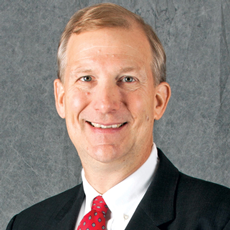
“It’s a seller’s market” is a phrase that’s been repeated surprisingly often lately.
One current example is live Christmas trees. Supplies are expected to disappear even quicker than last year’s record rates, insiders warn.
For far longer, auto makers have been yearning for a bigger supply of computer chips to get production lines back to speed.
In healthcare, if you had timely supplies of PPE, you were golden. Likewise, if you were pitching a healthy pipeline of frontline workers, you’re beyond golden.
Then there’s a group that’s been working on improving a vital long-term care supply chain element since well before the pandemic. To say it’s been doing well would be an understatement.
Vision 2025 has had a busy 2021 and is looking forward to an even more productive 2022. The campaign to bolster the development of long-term care, senior living and home care leaders has risen in strength during the public health emergency.
The high-minded initiative is progressing beyond theory at every check-in. This initiative aims to deliver 15,000 to 20,000 qualified, college-trained senior care leaders in the next few years, and keep the supply flowing.
“There’s probably somewhere between 65,000 and 75,000 leadership slots that need to be filled today, and you can just geometrically increase that as the boomers age,” explained Steve Chies during a Vision 2025 update with McKnight’s last week.
Chies is a veteran long-term care operator and the program director for long-term care at St. Joseph’s College of Maine. He was joined by fellow Vision 2025 co-chairman Sean Kelly, president and CEO of the Kendal Corporation, and Mike Schanke, Vision 2025 CHAASE liaison and president of Oakridge Gardens. Vision 2025 Founding Director Douglas Olson, Ph.D., also took part.
“We’re not talking about trying to train 200 nursing home administrators. We’re talking 15,000 to 20,000 individuals in the next few years to work in assisted living, work in skilled nursing, to work in home care, to work in daycare, to work in hospice,” Chies continued. “All those categories, we see the vision going forward, to give people a full array of options and opportunities to provide care.”
This is a party with an increasingly hot invite.
Over the summer, Vision 2025 organizers interested an increasing number of college and university leaders — beyond 40 at last count.
“We weren’t just making academic institutions aware of what we were doing and hearing them say, ‘Let us know how that’s going and get back to us,’ Kelly recalled. “We saw these colleges and universities reaching out saying, ‘How do we build our program here, today? And then how do we make the connections with the local organizations — senior care, long-term care … today?’ I think we were all a little surprised at the urgency that was being expressed by the colleges and universities.”
Through the fall, Vision 2025’s gurus kept busy boosting ties with the major long-term care constituent associations — those already on the steering committee and their various state chapter leaders. They also added a new one, the National Association for Home Care & Hospice.
In addition, the drive for more paid field-experience positions grew, leaders said. Work groups also have been fruitful focusing on creating pathways for students and college administrators who would join the movement.
In June 2022, each of the units will showcase what they’ve accomplished at the next Vision 2025 symposium in Chicago, an invitation-only affair.
Before then, however, a directory of colleges and universities offering long-term care leadership programs will come out online. That could be as early as February.
“I think the directory is going to be a game-changer in itself,” Kelly said.
He added that he’s become excited that the Vision 2025 campaign has raised awareness of the field, and the level of dynamism among its leaders. A key message: The job can be exhausting, but it also can produce a powerful attraction.
In the end, Vision 2025 should create even greater person-centered care, Kelly says.
That’s a commodity that would be a hot seller, no matter what market conditions exist.
James M. Berklan is McKnight’s Long-Term Care News Executive Editor.



